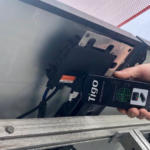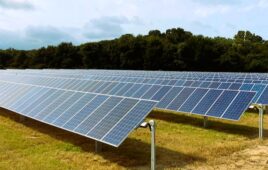By Chris Connell, head of solution management, Fronius USA
Now that California — the largest solar state in the U.S. — has adopted the 2017 National Electrical Code (NEC), many solar installers are searching for the best module-level rapid shutdown solution. Here are some criteria to use to find the best and safest option.
1. Safe and reliable switching in an emergency
Since module level shutdown is for firefighter safety, solutions have to be reliable. When rapid shutdown is activated, the rapid shutdown devices must reliably switch and de-energize the array. If this doesn’t occur, the risk could actually be higher than without having the shutdown function at all, because firefighters assume that the array is in fact de-energized.
So how can safe switching be ensured? Mechanical DC disconnects (e.g., on an inverter) are subject to testing to the UL 98B standard. This standard requires testing in typical environmental conditions in which the disconnect is supposed to function, with thousands of iterations along with other safety tests.
In stark contrast, today’s solid-state DC switches used in module-level shutdown compliance are only tested to UL 1741. UL 1741 is not a DC disconnect or safety switch standard. The environment that MLPE devices are designed to work in is actually more severe than the environment of a regular DC disconnect at or on the inverter. The rapid shutdown function should be tested outside of standard operating temperatures.
2. Accurate arc fault detection and proper shutdown response
Electronic components can create electrical noise. On the DC side of a solar system, this is typically not a problem. However, with today’s rapid shutdown devices, the noise levels can increase significantly and interfere with proper arc fault detection. Arc Fault Circuit Interrupter (AFCI) algorithms monitor DC current and voltage of the solar system and detect certain characteristics (such as sudden changes), which look like an arc, based on a set of arc signatures indicating what a typical arc looks like. If the measured current and voltage patterns look similar to an arc signature, the AFCI is triggered to extinguish an arc or prevent a potential arc before any damage occurs.
If the electrical noise created by rapid shutdown devices (e.g., from optimizers switching frequencies) creates signals that look like real arcs, the AFCI algorithm has difficulty discerning a real arc. This noise increases the likelihood of nuisance tripping or even worse, of not detecting a real arc. Furthermore, this additional noise could ironically interfere with the shutdown signal of some systems, making it difficult to rely on it shutting down when needed.
3. Fewer connection points for less arc risk
Studies conducted by Fraunhofer Institute in Germany and BRE National Solar Centre in the UK concluded that DC connectors are a main cause for serial arcs in a PV array. There are two main causes of DC connector faults:
- Installation errors. The most common installation errors are connectors that are not fully inserted and poor on-site crimping, both resulting in bad connections that can lead to arcing. Typical mistakes include use of incorrect crimping tools, mounting of connectors without enough precision or simply insufficient installation training.
- Lack of a DC connector standard. A mismatched connection is one between male and female DC connectors made by different manufacturers. Incompatibility leads to corrosion, ingress of water, different thermal expansion behavior or simply loose connections.
Any rapid shutdown solution that significantly increases the number of connection points can add risk to the system.
4. Cost effectiveness and longevity
Cost-effectiveness drives the adoption of solar energy, so it’s important that rapid shutdown solutions don’t make the price of systems unattainable for customers. In addition, solar systems are 20+ year investments. Systems with fewer components that don’t expose electronics to harsh rooftop environments will likely be more reliable.
When assessing rapid shutdown solutions on the market, put safety first and then consider added cost.
 Chris Connell is head of solution management at Fronius.
Chris Connell is head of solution management at Fronius.





“Cost-effectiveness drives the adoption of solar energy, so it’s important that rapid shutdown solutions don’t make the price of systems unattainable for customers. In addition, solar systems are 20+ year investments. Systems with fewer components that don’t expose electronics to harsh rooftop environments will likely be more reliable.”
It sounds like the “regulatory quagmire” has caught up with the Solar PV industry. Too many “device” demands without “thinking” about consequences is destructive. There are (lots) of things a fireman can DO to vent a roof with solar PV installed. Rack mounted panels, pry a couple of panels off of the rack and cut through the roof there, go to the ‘other’ side of the roof, north, west, east, hack through the roof and vent there. Then there’s the 2020 NEC change calling for shutdown of each (panel) to under 30VDC in a string. It’s beginning to look like converters or micro-inverters will have to have RSD built into these units to handle shutdown at the panel level. What about TESLA’s solar PV roofing tiles, how does one add RSD to nail down panel sections?+